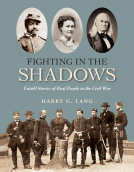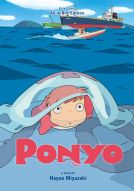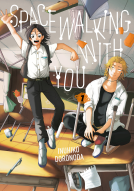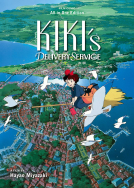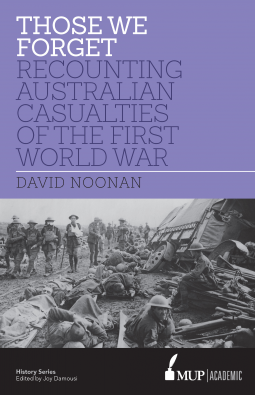
Those We Forget
Recounting Australian Casualties of the First World War
by David Noonan
This title was previously available on NetGalley and is now archived.
Send NetGalley books directly to your Kindle or Kindle app
1
To read on a Kindle or Kindle app, please add kindle@netgalley.com as an approved email address to receive files in your Amazon account. Click here for step-by-step instructions.
2
Also find your Kindle email address within your Amazon account, and enter it here.
Pub Date May 01 2014 | Archive Date May 01 2017
Melbourne University Publishing | MUP Academic
Description
The official Australian casualty statistics suffered by the men of the Australian Imperial Force in the First World War are seriously wrong, with significant inaccuracies and omissions.
Groundbreaking research exhaustively examining over 12,000 individual soldiers' records has revealed that hospitalisations for wounding, illness and injury suffered by men of the AIF are five times greater than officially acknowledged today.
Why has it taken nearly one hundred years for this to come to light?
Was it a conspiracy to suppress the toll, incompetence of Australia's official war historians Bean and Butler, or was it simply the unquestioning acceptance of the official record?
You are invited on the journey in this book to find the truth. The findings are startling and will rewrite Australia's casualty statistics of the First World War.
Lest we forget.
- - - - - -
Over a decade ago, David Noonan read the first of more than a hundred letters written by his grandfather from the Western Front. That was the impetus for a journey that took him through France and Belgium, retracing his grandfather's footsteps. His interest turned into a PhD at the University of Melbourne's Department of History and Philosophical Studies and a course in statistical sampling methodology at the Statistical Consulting Centre, in the Department of Mathematics. His research into the truth of what really happened to the men of the AIF in the First World War has resulted in Those We Forget.
Advance Praise
No Advance Praise Available
No Advance Praise Available
Marketing Plan
No Marketing Info Available
No Marketing Info Available
Available Editions
| EDITION | Paperback |
| ISBN | 9780522866674 |
| PRICE | A$59.99 (AUD) |
Average rating from 4 members
Featured Reviews
 Joseph S, Reviewer
Joseph S, Reviewer
Those We Forgot: Recounting Australia's Casualties of the First World War by David Noonan is a re-examination of Australia's human loses in World War I. Noonan became interested in the war when he read over one hundred letters his grandfather wrote from the Western Front. He retraced his grandfather’s service in France and Belgium. That interest grew into a PhD in History and Philosophical Studies at the University of Melbourne.
War is chaos and record keeping in chaos is not very accurate. Noonan examines the official numbers of Australia's war dead and compares that to his research. Last year I read Steven Casey’s When Soldiers Fall which covered US losses from WWI to Afghanistan. There are very similar problems in both books. The biggest problems concern what is a casualty? There is no standard definition. Is it death, disabling injury, temporary injury, prisoner of war, illness, food poisoning, desertion, all of these, a combination of these?
Noonan uses statistical methods to come to his results which are more accurate than the official records. The research finds some surprising information, such as venereal disease was a major problem in the AIF (Australian Imperial Force). Australian forces separated from home far away did not have the luxury of crossing the channel on leave to rejoin loved ones. Many who joined did not embark many were discharged for a variety of reasons before deploying.
Shell shock was another matter. If it was recorded it had to be evaluated whether is was physical or psychological or even real. It may seem strange that it might not be considered a combat injury, remember that Gulf War Syndrome was questioned as being a real ailment. World War I also had the first stages of the Spanish Flu outbreak, various diseases from life in trenches. Suicides and deaths after the end of the conflict, but caused by the conflict are also studied and accounted for.
Noonan uses samples and statistical data to complete a more accurate count of casualties. Although he is successful in giving a more accurate count not all the book is statistical data. He examines individual service files and provides a very good background into the medical and casualty reporting in the war. Although it is impossible to account for everyone, Noonan’s work goes a long way in accounting for many that were forgotten.
Thank you to the Melbourne University Press for making book to readers and reviewers on this side of the Pacific.
Readers who liked this book also liked:
Created by Hayao Miyazaki
Comics, Graphic Novels, Manga
A Film by Hayao Miyazaki
Children's Fiction, Comics, Graphic Novels, Manga
Created by Hayao Miyazaki
Comics, Graphic Novels, Manga, Sci Fi & Fantasy
Kotteri
Comics, Graphic Novels, Manga, General Fiction (Adult), Teens & YA
JUNO
Arts & Photography, Comics, Graphic Novels, Manga, Travel
